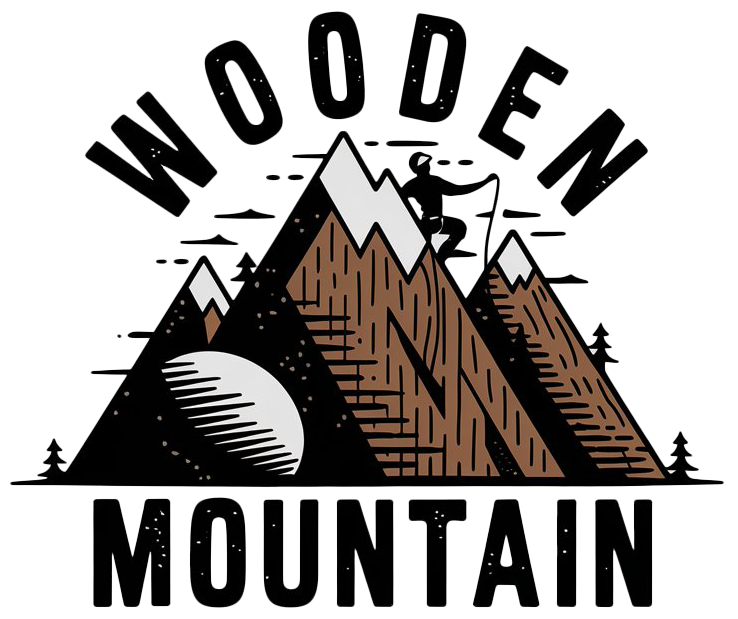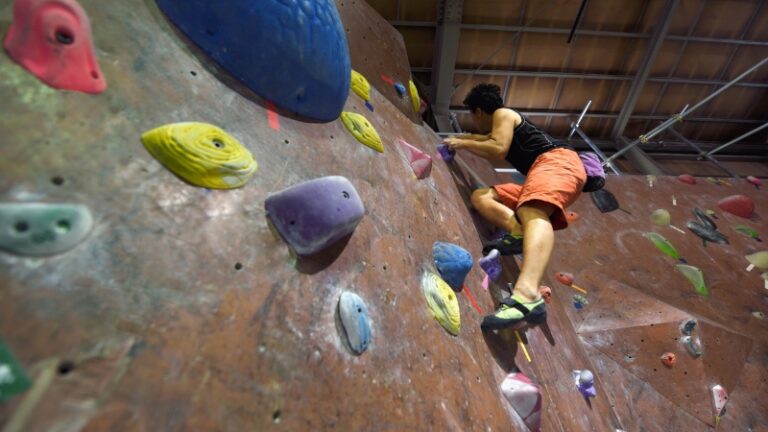Bouldering mistakes can lead to injury, poor technique, and slow progress. Many new climbers fall into traps that limit skill growth and confidence.
Learning proper form, safety habits, and route strategy early can save time and reduce frustration.
This guide breaks down the most common errors and provides exact solutions. With each fix, you can climb better and feel stronger.
Why Bouldering Looks Easy but Is Not
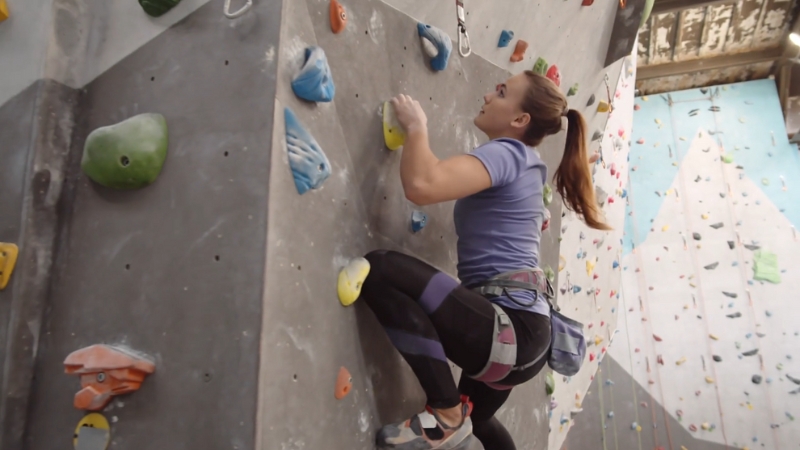
Bouldering may seem simple at first. No ropes, short walls, and colorful holds invite anyone to try. The problem starts when strength replaces technique.
Most new climbers pull too hard, grip too tight, and forget about the feet. That creates habits that block long-term progress.
A coach once said, The best climbers move slow and smart, not fast and strong. That advice stuck with me. My first year in the gym proved it right. I slipped often, blamed my shoes, and skipped warmups.
It took months to unlearn bad habits. Bouldering requires more body awareness than people expect, and those who treat it like a pull-up contest often burn out quickly.
Poor Footwork Causes Most Falls
Foot slips account for over half of beginner falls. Many people rely on their arms and ignore precise foot placement. This causes an imbalance and leads to quick fatigue. Shoes touch the wall too loudly, too fast, or in the wrong spot.
Fix the mistake by placing the toe on each foothold with care. Step with control and ensure the entire shoe makes contact with the wall. Good footwork keeps the body stable and shifts weight away from the arms, allowing for a more stable position.
Practice silent stepping on every route. Use the edge of your toe to pivot smoothly, rather than dragging your foot across the wall. Footwork drills, such as wall walking and slow traverses, help develop precision and rhythm.
Overgripping Wastes Strength Fast
New climbers squeeze every hold with full force. That tires the fingers too early. Many people think that a greater grip means more control, but the opposite is true.
Grip just enough to stay in place. The rest is about body tension and foot pressure.
Test grip strength by trying to hold a jug with one finger relaxed. If your forearms burn in under ten seconds, you are overgripping. Loosen your grip between holds to save energy. Use open-hand positions when possible.
Finger fatigue not only slows progress but also increases the risk of tendon strain. Controlled grip also helps with hold sensitivity, which improves your ability to react to different surface textures.
Skipping the Warmup Increases Injury Risk
Warm muscles move better and break less. Cold fingers tear skin. Many skip prep routines and go straight to complex problems. This can lead to finger strain, joint stress, and skin splits.
Spend ten minutes on wrist rolls, jumping jacks, and basic stretches. Begin with easy routes to generate body heat. Add finger pulls and shoulder circles before touching hard holds.
Climbing is safer and smoother when the body feels ready. Dynamic warm-ups also improve mental focus, giving you time to shake off the stress of the day before you begin climbing.
Ignoring Route Reading Leads to Panic
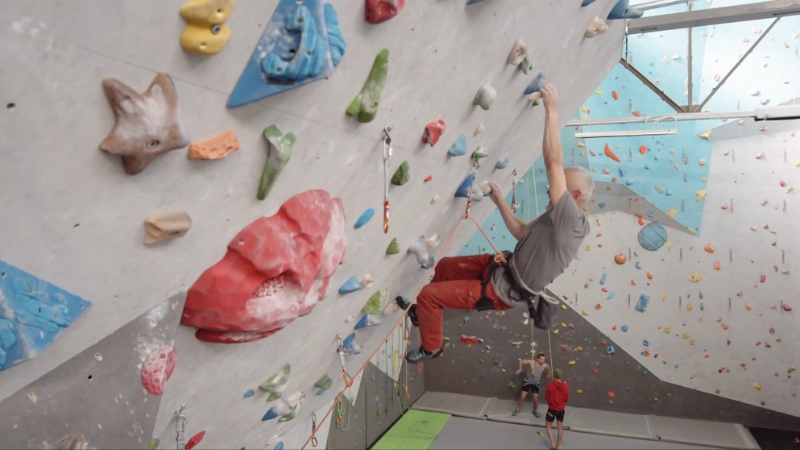
Route reading involves examining the wall and planning moves before climbing. Beginners skip this step. They start fast and freeze midway. That breaks rhythm and wastes time.
Fix the habit by taking one minute before each climb. Trace the hand and foot sequence with your eyes. Picture h complex moves and rest spots.
Climbing starts before the hands touch the wall. Think about body direction and weight shifts before stepping up. Mental rehearsal enhances decision-making and reduces hesitation, particularly in unfamiliar situations.
Strength Over Technique Causes Plateaus
Muscles help, but smart movement wins. Strong climbers with poor form stall early. Technique matters more in harder grades.
Body position, balance, and foot swaps solve problems that raw power cannot.
Practice with drills. Try using only feet and one hand. Climb routes below your grade with a focus on flow. Listen to coaches and study better climbers in the gym.
Take videos to observe your posture and transitions. Often, the most technical climbers use subtle shifts to conserve energy where others burn out.
Jumping Down Creates Injuries
View this post on Instagram
New climbers jump off the wall after every climb. That damages ankles and knees. Most gyms report minor injuries from bad landings. Padded floors help, but bones and joints feel every shock.
Always climb down when possible. Use the holds or designated downclimb routes. If you must jump, land with bent knees and flat feet.
Keep arms close to avoid wrist injury. Regular downclimbing not only protects joints but also builds grip endurance and improves problem recall.
Sticking to One Climbing Style Limits Growth
People love comfort. Some only climb slabs. Others only pull on steep overhangs. That blocks full-body development. Each angle trains different skills.
Try one slab, one vertical, and one steep route each session. Rotate styles and test your body on varied walls. That builds complete control and prepares you for outdoor rock.
Diversity improves adaptability, which becomes crucial when conditions or hold types vary.
Bouldering Mistakes vs. Corrections
Mistake
Consequence
Fix
Sloppy footwork
Falls, poor balance
Place toes gently and directly
Overgripping
Early fatigue
Relax fingers and use an open-hand grip
Skipping warmup
Finger and joint pain
10-minute prep and light climbing
No route reading
Freezing on the wall
Visualize moves in advance
Relying on strength
Plateau at low grades
Focus on balance and foot swaps
Jumping off the wall
Ankle and knee damage
Downclimb slowly or land with care
One-style climbing habit
Limited progress
Rotate wall angles each session
Comparing to Others Kills Motivation
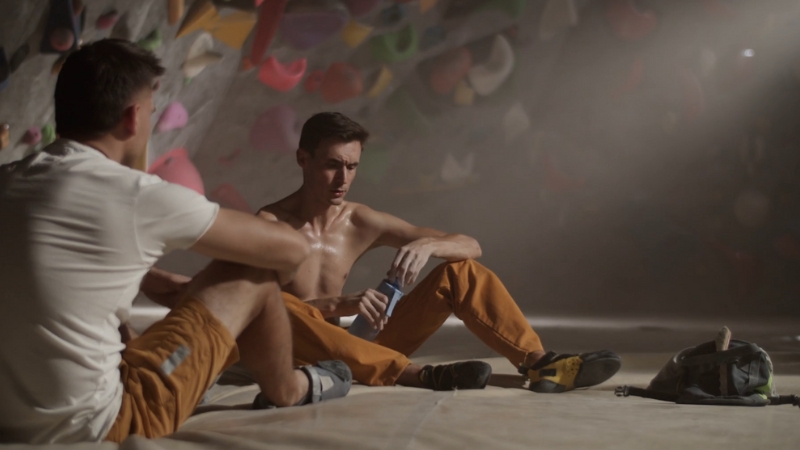
Climbing attracts competitive minds. People check grades, copy strong climbers, and feel behind. That crushes motivation fast. Everyone climbs at their own pace.
Focus on your growth. Track progress with a journal. Celebrate small wins, such as smoother movement or improved footwork.
The best climbers enjoy the process, not just the send. Accept that each climber started at a different point, with a different body and learning speed.
Bad Body Position Ruins Efficiency
Hips should stay close to the wall. Many keep the torso too far out. That forces arm overuse and messes with balance. The body should move as one unit.
Practice twisting the body sideways into the wall. Keep your center of mass near your feet. That keeps tension low and makes long moves easier.
Efficient movement depends on tight core engagement and accurate foot placement—the wall rewards smooth climbers with better control.
Climbing Without Rest Slows Progress
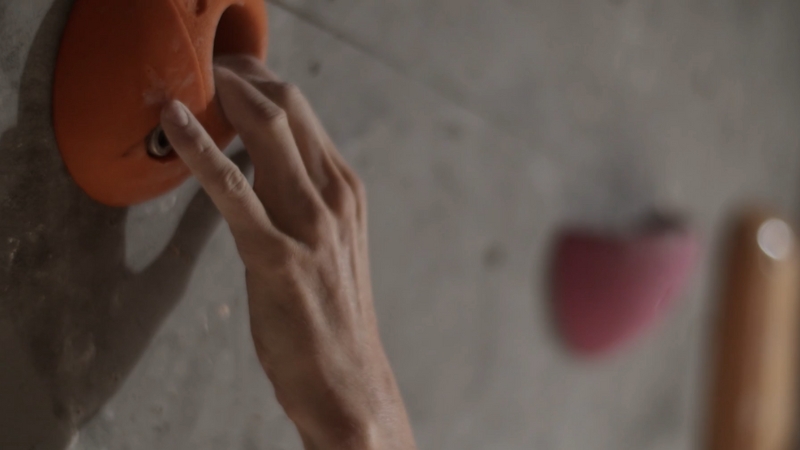
More climbs do not mean more gains. Muscles need time to rebuild. Many beginners climb for hours without rest. That kills strength and invites poor form.
Limit sessions to 60–90 minutes, rest between challenging climbs. Take breaks and eat protein-rich snacks. Your body performs better when rested.
Progress comes not only from volume, but also from intention and recovery. Shorter, focused sessions are more effective than long, disorganized ones.
Not Asking for Help Slows Learning
New climbers fear looking weak. That blocks them from learning. Most gyms have coaches, advanced climbers, and friendly staff. Use them.
Ask questions about routes, technique, and shoe choice. Watch better climbers and ask why they move a certain way.
Every good climber starts the same way. Learning from others accelerates your growth and builds a supportive gym experience.
Wearing the Wrong Shoes Affects Form
Shoes matter more than gear. Loose shoes slide on footholds. Tight shoes cause pain. Cheap ones fall apart fast. A bad shoe choice leads to poor form.
Buy shoes that fit snugly without causing pain. Try them on in the gym. Ask staff for help. A good pair makes climbing feel easier and cleaner.
A proper fit ensures a better grip, increased sensitivity, and longer climbing sessions without discomfort.
My First Climbing Injury
@rustyclimbs Trying to climb through injuries🤷🏼♂️ This actually seemed to help! Lmk if you’ve got any other tips!! 🔥 #bouldering #boulder #rockclimbing #climb #rustyclimbs #climbinggym #climbing #injury ♬ a punk – 3 minute audios
I once jumped off a wall after a long session. My legs felt tired, and the landing seemed soft. I landed wrong and rolled my ankle.
No break, but the swelling lasted weeks. I missed a month of climbing for one careless choice.
Now I climb down every time. I teach beginners the same. One mistake can steal your momentum. Safe habits matter more than one proud send. Every session should end as safely as it starts.
Why Bouldering is Worth the Struggle
Most people quit early. Pain, fear, and plateaus scare them off; however, the ones who stay become stronger, both inside and out. Every climb solves a problem. Each session builds courage and patience.
The joy comes not from finishing every route, but from trying smarter. Bouldering teaches how to think, fall, and keep moving. With every move, you build more than strength. You make a calm mind and a capable body.
